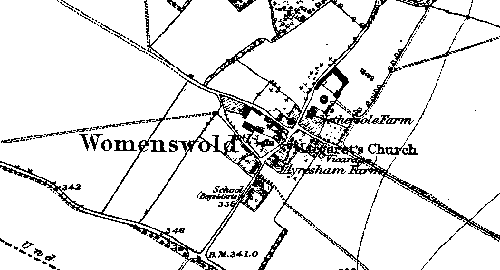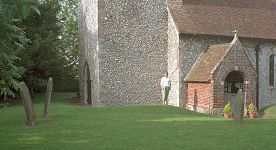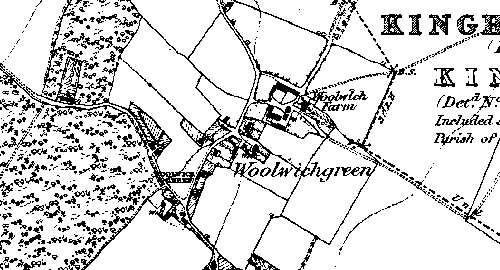 |
| The village of Womenswold in 1876 showing the school, church, and two main farms. |
Womenswold, Kent
as it relates to the Fagg family history.
The parish of Womenswold
This brief history is intended as a background to the Fagg family history. It therefore concentrates on items considered relevant, and should not be regarded as a comprehensive history of the town or district.
Womenswold Village
The village of Womenswold is on the low ridge of hills NE of the Elham Valley, to the south of Canterbury. The village nestles in a sheltered wooded depression, and in the 1800s comprised a church, a vicarage, a school and schoolhouse, two farms, and about 20 cottages. Today it is little changed, though the school is an adult education centre and Nethersole Farm houses a specialist supplier of guitars.
The settlement of Womenswold is believed to date back at least to Saxon times. The name probably comes from the name of the Saxon 'tribe' living there, and up to the 1900s was given a variety of spellings such as Wyminges Would.
The Fagg family was established in Womenswold by the time of the 1941 census, living alongside the Baldocks and Dawkins with whom they had married, and remained there into the 1870s. One of the family, William, married and settled in nearby Woolwich Green and is buried in Womenswold churchyard beside his wife Caroline.
 |
| The village of Womenswold in 1876 showing the school, church, and two main farms. |
 |
|
| Womenswold church. The two gravestones on the left are for William and Caroline Fagg, who lived in Woolwich Green. | . |
Woolwich Green
Between one and two miles SE of Womenswold village is the village of Woolwich (or Woolage) Green, in the parish of Womenswold.
 |
| Woolwich Green in the parish of Womenswold, about 1 mile SE of Womenswold village. |
Page last updated 27/07/2001